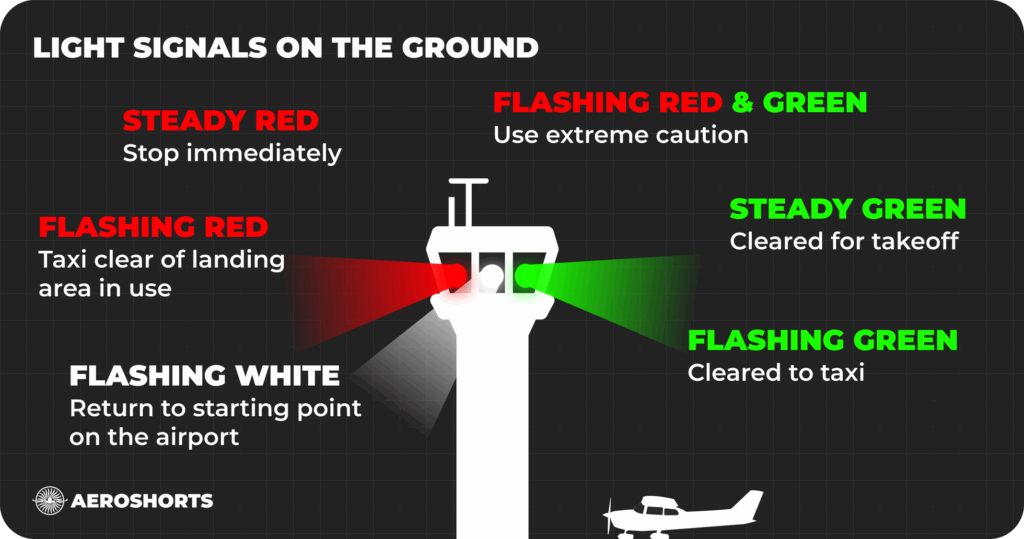If you are flying and your radio suddenly stops working, it can be stressful. This is especially true when you are close to an airport. But even if your radio fails, air traffic control still has a way to talk to you. They use something called light signals from the tower.
These signals are part of an emergency system. It is an old system, but still important today. Every pilot should know what the different light signals mean.
What to do first
If your radio stops working, your first step is to set your transponder to squawk 7600. This code tells air traffic control that you have lost radio contact. After that, watch the control tower. The controller may use a light gun to give you instructions.
The tower uses a special light that can show red, green, or white. The lights can be steady or flashing. The meaning changes depending on whether you are in the air or on the ground.
Light Signals in the Air
| Signal | Meaning |
|---|---|
| Steady green | Cleared to land |
| Flashing green | Return for landing (but wait for clearance) |
| Steady red | Give way to other aircraft and continue circling |
| Flashing red | Airport unsafe, do not land |
| Flashing red and green | Use extreme caution |

Light Signals on the Ground
| Signal | Meaning |
|---|---|
| Steady green | Cleared for takeoff |
| Flashing green | Cleared to taxi |
| Steady red | Stop immediately |
| Flashing red | Taxi clear of landing area in use |
| Flashing white | Return to starting point on the airport |
| Flashing red and green | Use extreme caution |

Losing radio contact is rare, but it can happen. These light signals are your backup way to stay in touch with ATC. If you’re ever in that situation, now you know how to read the signals and stay safe.